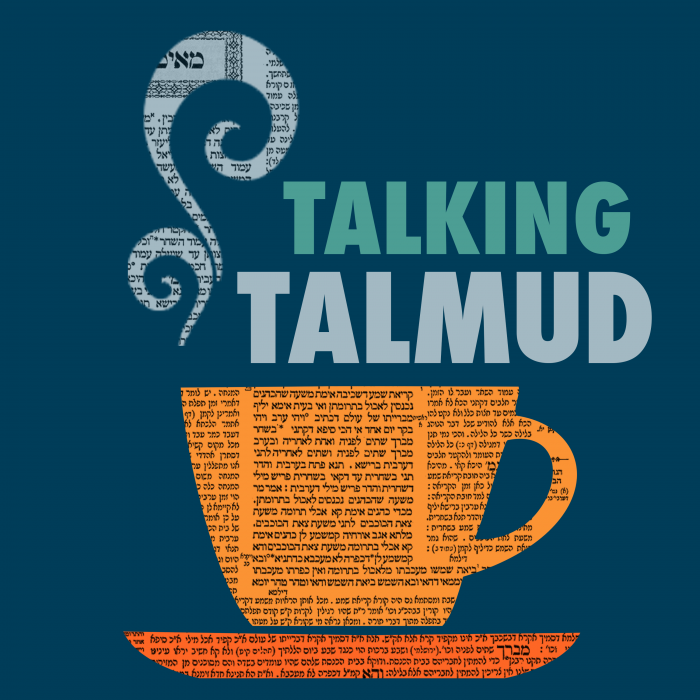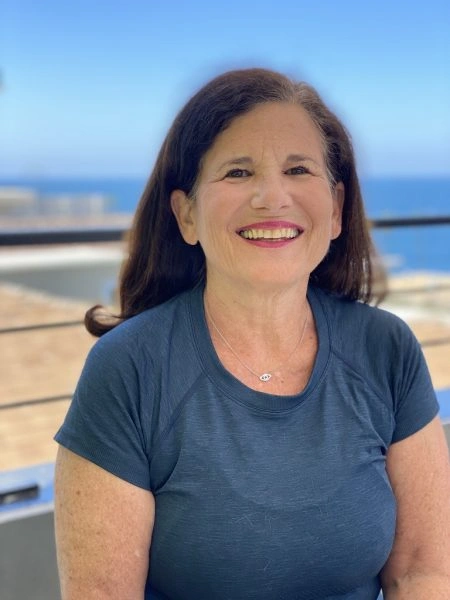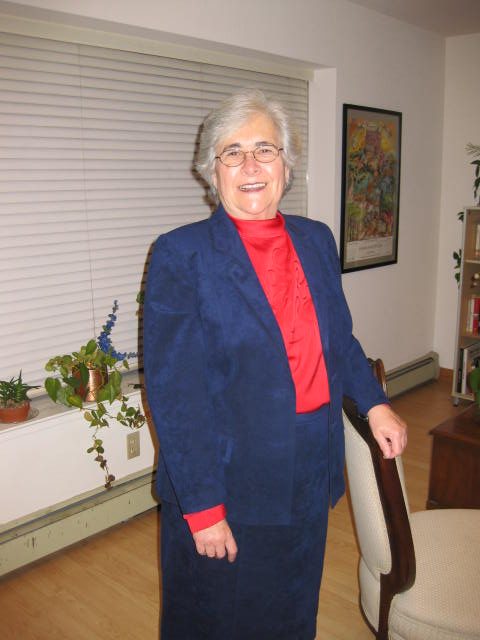Bava Batra 166
וְאֵימָא פְּרִיטֵי! פְּרִיטֵי דְּדַהֲבָא לָא עָבְדִי אִינָשֵׁי.
The Gemara asks further: But why not say that the intent is not a dinar, but smaller coins, such as perutot? The Gemara answers: People do not make perutot of gold.
״זָהָב בְּדִינָרִין״ – אֵין פָּחוֹת מִבִּשְׁנֵי דִינָרִין כֶּסֶף, זָהָב. וְאֵימָא דַּהֲבָא פְּרִיכָא בִּתְרֵי דִינָרֵי דַּהֲבָא קָאָמַר! אָמַר אַבָּיֵי: יַד בַּעַל הַשְּׁטָר עַל הַתַּחְתּוֹנָה.
The Gemara continues its analysis of the baraita, which states: If it is written: Gold, in dinars, the amount must be no less than two silver dinars’ worth of gold. The Gemara asks: But why not say that the document is speaking of two golden dinars’ worth of pieces of gold? Abaye says: This interpretation is also possible, but the guiding principle in all interpretations of ambiguities is that the holder of the document is at a disadvantage.
רֵישָׁא דְּקָתָנֵי: ״כֶּסֶף בְּדִינָרִין״ – אֵין פָּחוֹת מִשְּׁנֵי דִּינָרִין זָהָב, כֶּסֶף; אַמַּאי? אֵימָא כַּסְפָּא – נְסָכָא בִּתְרֵי דִּינָרֵי כַּסְפָּא קָאָמַר!
The Gemara asks a question from the first clause of the baraita, which teaches that if the document states: Silver in dinars, the amount must be no less than two golden dinars’ worth of silver. Why is he entitled to so much? Say that the document is speaking of silver only, and means: Two silver dinars’ worth of silver pieces. This interpretation would be a lower value than the interpretation assigned to it by the baraita, and would be in keeping with the principle that the holder of the document is at a disadvantage.
אָמַר רַב אָשֵׁי: רֵישָׁא דִּכְתַב ״דִּינָרֵי״, סֵיפָא דִּכְתַב ״דִּינָרִין״.
Rav Ashi said in reply that the text of the baraita should be emended: In the first clause the case is that the scribe wrote: Silver in dinars, using the plural form dinarei, which refers specifically to golden dinars. In the latter clause, the case is that the scribe wrote: Gold in dinars, using the plural form dinarin, which denotes silver dinars specifically.
וּמְנָא תֵּימְרָא דְּשָׁאנֵי בֵּין ״דִּינָרֵי״ לְ״דִינָרִין״?
The Gemara supports its assertion that there is a difference between these two plural forms: And from where do you say that there is a difference between the words dinarei and dinarin?
דְּתַנְיָא: הָאִשָּׁה שֶׁהָיוּ עָלֶיהָ סְפֵק חָמֵשׁ לֵידוֹת; סְפֵק חָמֵשׁ זִיבוֹת – מְבִיאָה קׇרְבָּן אֶחָד וְאוֹכֶלֶת בִּזְבָחִים, וְאֵין הַשְּׁאָר עָלֶיהָ חוֹבָה. הָיוּ עָלֶיהָ חָמֵשׁ לֵידוֹת וַדָּאוֹת; חָמֵשׁ זִיבוֹת וַדָּאוֹת – מְבִיאָה קׇרְבָּן אֶחָד וְאוֹכֶלֶת בִּזְבָחִים, וְהַשְּׁאָר עָלֶיהָ חוֹבָה.
This is as it is taught in a mishna (Karetot 8a): In the case of a woman for whom there was uncertainty with regard to five births, and likewise a woman for whom there was uncertainty with regard to five irregular discharges of blood from the uterus [ziva], she brings one offering, and then she may partake of the meat of offerings. And the remaining offerings are not an obligation for her. If she has in her case five definite births or five definite discharges of a zava, she brings one offering, and then she may partake of the meat of offerings. And the remaining offerings are an obligation for her.
מַעֲשֶׂה וְעָמְדוּ קִינִּים בִּירוּשָׁלַיִם בְּדִינְרֵי זָהָב, אָמַר רַבָּן שִׁמְעוֹן בֶּן גַּמְלִיאֵל: הַמָּעוֹן הַזֶּה! אִם אָלִין הַלַּיְלָה עַד שֶׁיְּהוּ בְּדִינָרִין. נִכְנַס לְבֵית דִּין וְלִימֵּד: הָאִשָּׁה שֶׁהָיוּ עָלֶיהָ חָמֵשׁ לֵידוֹת וַדָּאוֹת; חָמֵשׁ זִיבוֹת וַדָּאוֹת – מְבִיאָה קׇרְבָּן אֶחָד וְאוֹכֶלֶת בִּזְבָחִים, וְאֵין הַשְּׁאָר עָלֶיהָ חוֹבָה.
That mishna continues: There was an incident where the price of nests, i.e., pairs of birds, stood in Jerusalem at golden dinarei, as the great demand for birds for the offerings of a woman after childbirth and a zava led to an increase in the price. Rabban Shimon ben Gamliel said: I take an oath by this abode of the Divine Presence that I will not lie down tonight until the price of nests will be in dinarin. Ultimately, he entered the court and taught: A woman for whom there were five definite births or five definite discharges of a zava brings one offering, and then she may partake of the meat of offerings. And the remaining offerings are not an obligation for her.
וְעָמְדוּ קִינִּין בּוֹ בַּיּוֹם בְּרִבְעָתַיִם.
The mishna concludes: And as a result, the price of the nests stood that day at one-quarter of a silver dinar, as the demand for nests decreased. It is clear in the mishna that the term dinarei indicates a higher value than the term dinarin.
כָּתוּב מִלְּמַעְלָה וְכוּ׳. תָּנוּ רַבָּנַן: יִלְמַד הַתַּחְתּוֹן מִן הָעֶלְיוֹן – בְּאוֹת אַחַת; אֲבָל לֹא בִּשְׁתֵּי אוֹתִיּוֹת –
§ The mishna teaches: If it is written in the document above that someone owes one hundred dinars, and below it is written two hundred dinars, or if above it is written two hundred and below one hundred, everything follows the bottom amount. If so, why does one write the information in the upper part of the document at all? It is a safety measure, so that if one letter is erased from the lower part of the document, thereby rendering it illegible, the information can be learned from the upper part of the document. The Sages taught in a baraita (Tosefta 11:4): Information concerning what is written below may be learned from what is written above if the lower text is missing one letter, but not if it is missing two letters. In that case, in the event of a discrepancy between information written above and information written below, the document is not valid.
כְּגוֹן ״חָנָן״ מֵ״חֲנָנִי״ וְ״עָנָן״ מֵ״עֲנָנִי״.
For example, if the name of one party is written as Ḥanan below and Ḥanani above, it may be derived from the word Ḥanani written above that the party is named Ḥanani. And similarly, if a name is written Anan below, it may be learned from the name Anani written above that the party is named Anani.
מַאי שְׁנָא שְׁתֵּי אוֹתִיּוֹת דְּלָא – דִּלְמָא מִיתְרְמֵי שֵׁם בֶּן אַרְבַּע אוֹתִיּוֹת, וְהָוֵה לֵיהּ פַּלְגֵיהּ דִּשְׁמָא; אִי הָכִי, אוֹת אַחַת נָמֵי – דִּלְמָא מִיתְרְמֵי שֵׁם בֶּן שְׁתֵּי אוֹתִיּוֹת, וְהָוֵה לֵיהּ פַּלְגֵיהּ דִּשְׁמָא!
The Gemara asks: What is different about two letters missing, that the baraita teaches that the name written below cannot be corrected from the name written above? The Gemara suggests: It is out of concern that perhaps it will occur by chance that there is a four-letter name, and the omission of two letters would be half of the name, and for this reason the Sages extended this concern to all cases where two letters are missing. The Gemara challenges: If so, the same could be said when one letter is missing as well, as perhaps it will occur by chance that there is a two-letter name, and the omission of one letter would be half of the name.
אֶלָּא שְׁתֵּי אוֹתִיּוֹת הַיְינוּ טַעְמָא – דִּלְמָא מִיתְרְמֵי שֵׁם בֶּן שָׁלֹשׁ אוֹתִיּוֹת, וְהָוֵה לֵיהּ רוּבָּא דִשְׁמָא.
The Gemara explains: Rather, this is the reason that when two letters are missing the name written below cannot be corrected from the name written above: The concern is that perhaps it will occur by chance that there is a three-letter name, and the omission of two letters would be a majority of the name. The Sages applied this concern to all cases where two letters are missing.
אָמַר רַב פָּפָּא: פְּשִׁיטָא לִי – ״סֵפֶל״ מִלְּמַעְלָה וְ״קֵפֶל״ מִלְּמַטָּה – הַכֹּל הוֹלֵךְ אַחַר הַתַּחְתּוֹן.
The Gemara continues to discuss discrepancies between the information written above and below in a document. Rav Pappa said: It is obvious to me that if a document states above that one owes a sefel, a type of cup, and below it states kefel, a type of garment, everything is determined by the information written below. In this case there is not a missing letter at the bottom but an altered letter. Therefore, the information written below is not corrected from the information written above.
בָּעֵי רַב פָּפָּא: ״קֵפֶל״ מִלְּמַעְלָה וְ״סֵפֶל״ מִלְּמַטָּה, מַאי – מִי חָיְישִׁינַן לִזְבוּב, אוֹ לָא? תֵּיקוּ.
Rav Pappa raises a dilemma: What if it is stated kefel above and sefel below? The difference between the two words is that the former begins with kuf, whereas the latter begins with samekh. The orthographical difference between these two letters is a single stroke that extends downward, as the omission of the extension of this stroke would change kuf into samekh. Rav Pappa’s dilemma is: Are we concerned for the possibility that a fly landed on the stroke of the kuf, removing the ink and changing it into samekh? Or are we not concerned with this possibility? The Gemara comments: The dilemma shall stand unresolved.
הָהוּא דַּהֲוָה כְּתִב בֵּיהּ: ״שֵׁית מְאָה וְזוּזָא״, שַׁלְחֵהּ רַב שֵׁרֵבְיָא קַמֵּיהּ דְּאַבָּיֵי: שֵׁית מְאָה אִיסְתֵּירֵי וְזוּזָא, אוֹ דִלְמָא שֵׁית מְאָה פְּרִיטֵי וְזוּזָא? אֲמַר לֵיהּ: דַּל פְּרִיטֵי, דְּלָא כָּתְבִי בִּשְׁטָרָא – דַּאֲסוֹכֵי מַסְכַּן לְהוּ,
§ The Gemara relates: There was a certain document in which it was written that the amount due was six hundred and a dinar, without specifying to which denomination the six hundred amount referred. Rav Sherevya sent this question before Abaye: Does the holder of the document collect six hundred istira and a dinar? Istira is another name for a sela, which equals four dinars. Or is he perhaps entitled to collect only six hundred perutot and a dinar, a peruta being a small fraction of a dinar? Abaye said to him: Remove the possibility of six hundred perutot, since people do not write large numbers of perutot in a document, as they instead combine them into larger denominations






















